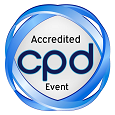
Kapil Sugand
Imperial College London, UK
Title: Holography over powerpoint presentations in medical lectures: Is it time to set a new gold standard? A randomized controlled, single-blinded, non-inferiority trial
Biography
Biography: Kapil Sugand
Abstract
Purpose: Didactic medical lectures are unanimously delivered through PowerPoint presentations and have become the gold-standard in practice. To observe the impact of learning using augmented reality dynamic holography (ARDH) compared to gold standard static PowerPoint presentations in didactic lecturing. Methods: A prospective single-blinded randomized controlled non-inferiority trial was conducted with a 100 national medical students randomly allocated to ARDH (n=50) or Powerpoint (n=50) cohorts. Primary outcomes were objective metrics by answering (i) 20 exam questions before and after each modality and (ii) correlating with validated tests on educational theory. Mean scores (SD; 95% CI) were calculated with significance set at p<0.05. Secondary outcomes were subjective metrics on educational impact by (i) answering a 10-point questionnaire on 7-point Likert scales and (ii) 5-minute semi-structured interview. Results of objective testing: 30 (60%) participants completed SBAs in the ARDH group with a 19% improvement from a mean pre-test score was 9.0 (2.6; 95% CI 8.1-9.9) to a mean post-test mean score of 12.8 (2.9; 95% CI 11.6-13.6). In the PowerPoint group, 42 (84%) participants completed the objective testing with an improvement of 16% from a mean pre-test score of 8.8 (3.3; 95% CI 7.7-9.8) to mean post-test score of 12.0 (3.5; 95% CI 11.0-13.1). All scores were significant (p-value<0.05). Conclusion: Dynamic holography has been applied into didactic lecturing for the first time. ARDH was accepted by participantsand wasnon-inferior to the gold standard PowerPoint lectures. ARDH has the added benefit of enhancing the learning experience and educational impact.

